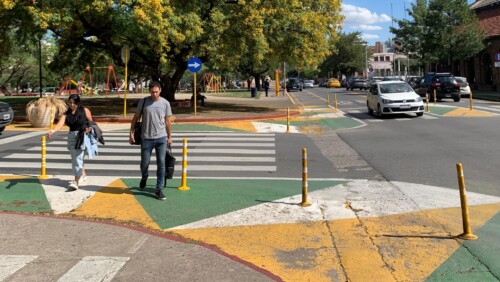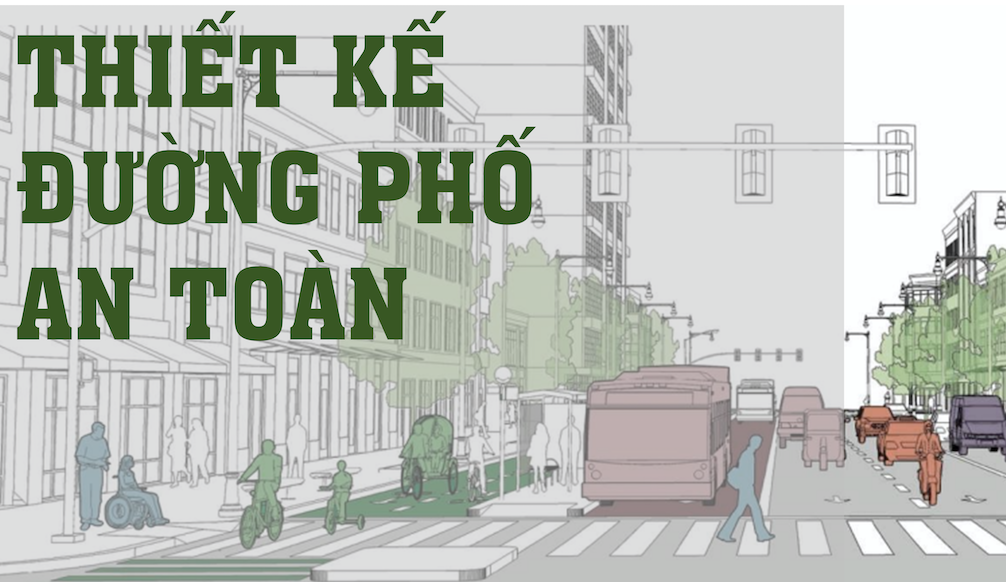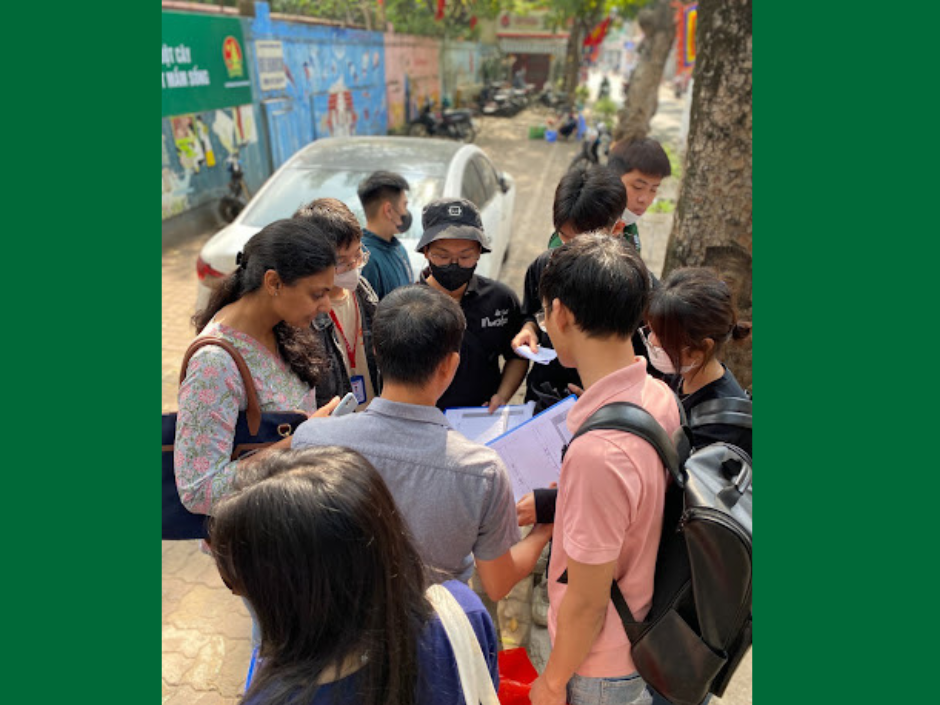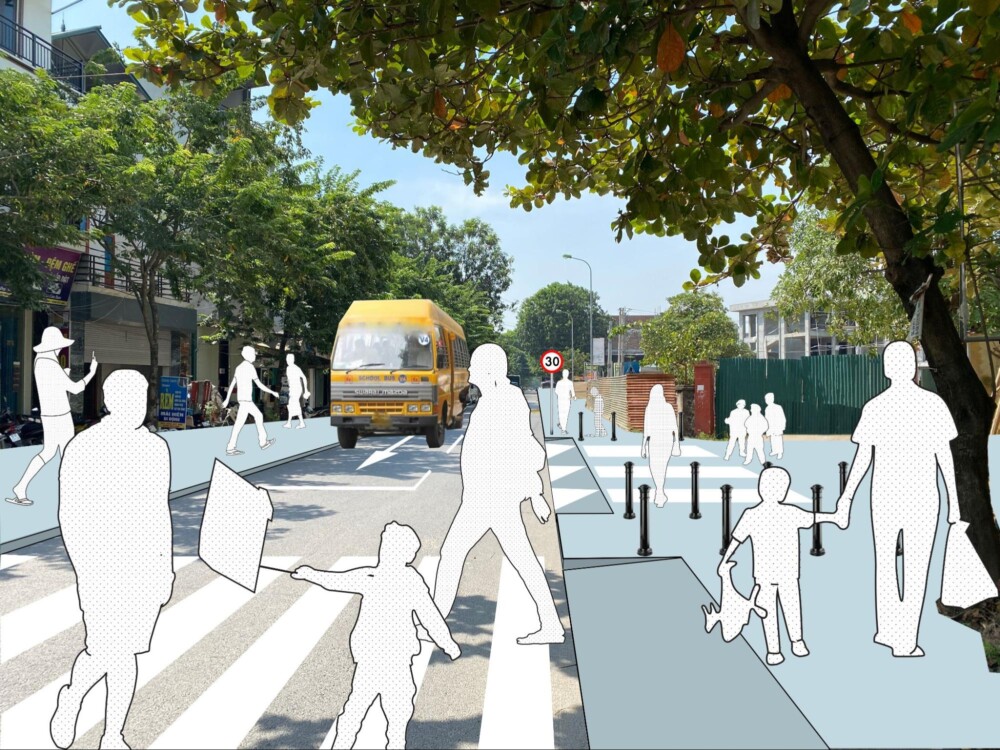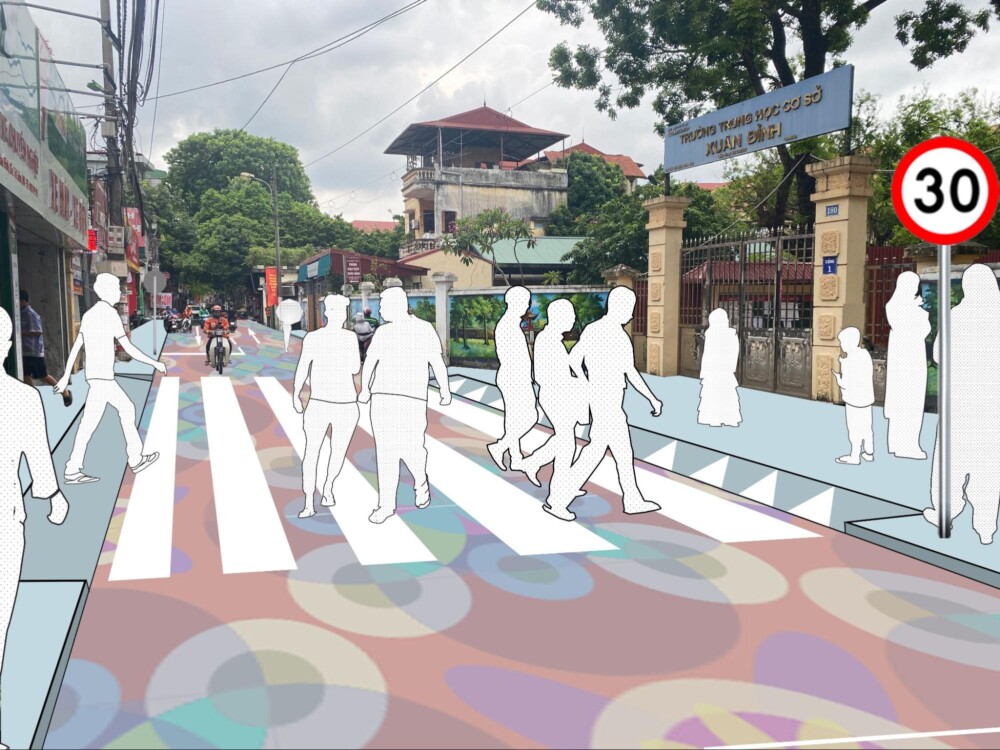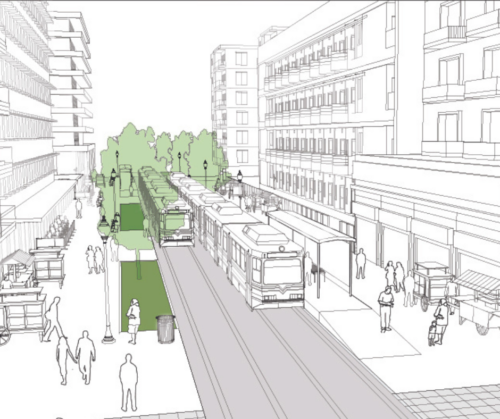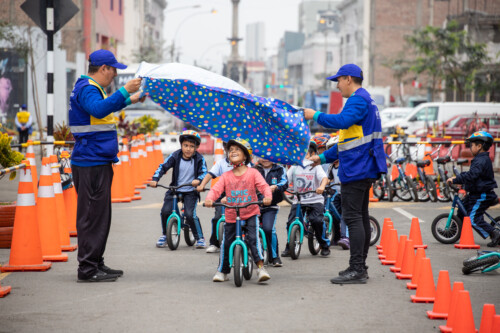On July 18, GDCI launched the Vietnamese translations of the award-winning Global Street Design Guide, the Designing Streets for Kids guide, and the How to Evaluate Street Transformations manual. To coincide with the launch, the city of Ha Noi also endorsed the Global Street Design Guide, showing commitment to the guide’s principles.
The Vietnamese translations of the resources are part of the broader work GDCI is undertaking with the Ha Noi Department of Transport as part of the Bloomberg Philanthropies Initiative for Global Road Safety (BIGRS).
In 2022, 11,448 crashes killed 6,364 people and severely injured 4,215 in Vietnam. Alarmingly, pedestrians continue to be the most at risk, accounting for 39% of all road traffic fatalities. According to official data, mode share in Ha Noi is dominated by powered two-wheelers: most vehicles on the streets are motorcycles. In 2019, Vietnam had 61.3 million motorcycles on its roads, serving a population of around 95 million people.
Reports of road safety issues particularly due to large, high horsepower motorcycles, and increasing numbers of xe ôm, or motorcycle taxis, that offer informal means to make a living as delivery drivers, make it difficult to consolidate progress and make streets safe to cross.
GDCI began working with Ha Noi in 2022 to address the challenges of road safety that come with growing congestion and parking needs, and lack of infrastructure for pedestrians.
The focus is on making safe streets for children and young adults, who are some of the most vulnerable users of roads and public spaces.
GDCI and with the Ha Noi Department of Transport and Traffic Safety Committee, set out to make traffic in school zones safer, calmer, and less congested for the students and their caregivers.
GDCI analyzed several areas around schools and decided to focus on four of them: Nguyen Du Primary School, Sai Son school, Xuan Dinh, and Dai Co Viet.
Each of the schools is located in different contexts within Ha Noi. One is in an urban village with narrow residential streets that are often congested. Another is in a suburban context where freight trucks regularly drive through the space where children must cross. Each has its unique safety challenges for students and caregivers, as well as the challenge of congestion and parking.
Program Manager Uditi Agarwal and Abhimanyu Prakash, regional lead for Asia and Africa, traveled to Ha Noi to understand the experience of people who use these spaces, as well as the city’s vision. Based on several city visits and subsequent discussions with the stakeholders, GDCI proposed interventions to the sites that would make them safer and more accessible. These interventions include infrastructure that promotes speed reduction through traffic calming such as raised intersections, speed humps and tighter turning radii; and provision of safe pedestrian infrastructure such as continuous sidewalks, curb extensions and at-grade crossings.
Earlier this year, the team carried out a thorough documentation of the sites. A detailed metrics collection exercise was conducted at the Xuan Dinh site to understand the “before” status. This included quantitative data such as pedestrian counts, traffic volumes and vehicular speeds, and a qualitative understanding of the perception of road safety amongst users. The data will help GDCI evaluate the impact of the transformations once they are completed later in the year.
GDCI looks forward to implementing the projects in the following months.
